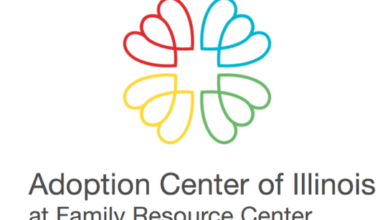Chicago School Studies Show Culture Improves Education
Written by Byron Stingily

Chicago School Study Results show that culture fosters organizational and higher education effectiveness and productivity.
In this study, the culture of the examined organization has several qualities that research has determined is present in effective schools. The culture of the school is focused on the central purpose of changing students’ attitudes and approach toward school.
The students at the Chicago school in this study are taught life skills that will hopefully lead toward better decision-making. Teaching principles to promote better attitudes is listed as one of the five basic assumptions of an effective school.
The other assumptions listed include providing a positive environment for learning to occur, holistic learning, positive attitudes of staff, and high expectations for all students (Owens, p.172, 2015).
The basic elements of an effective school as it relates to students are currently present. Many of the students have endured issues that have hindered them from reaching their full potential, but the school fosters a climate to help students overcome those obstacles.
Culture is not just related to attitudes in regard to students, but the research has also given light to the impact of teachers’ attitudes towards the work environment and the impact of overall school production.
Leadership can transform the environment within a school. The culture of the organization in this study indicates a sense of staff members being empowered. Staff members take a proactive approach to duties, and go above and beyond the minimum duties required.
The studies indicate staff demonstrating pride, dedication, vigor, passion, enthusiasm, and absorption in work as traits of a healthy organization (Gabriel, p.4, 2015). The particular organization being assessed has demonstrated most, if not all, of the attributes mentioned.
Culture improves collegial and collaborative activities, which foster better communication and problem-solving practices.
The staff at this particular institution is very collegial towards each other on a personal level. One area that could use some improvement may be communication. During research the term of role ambiguity is mentioned. The term refers to “uncertainty about what the occupant of a particular office is supposed to do”(Owens, p.103, 2015).
Role ambiguity is an issue within this particular organization. Staff members serve in various roles and assume roles without being asked. Sometimes these actions lead to staff members questioning each other’s authority. Multiple instances have led to role conflict within the organization.
Staff members have different expectations as to what should be done and how it should be accomplished in certain situations. The administration, by seeking to empower staff members, may to some degree lessen their own power.
The organization’s leader, while empowering teachers, would benefit by implementing and establishing protocols of communication. Staff members should notify leadership in a timely manner when making any changes to plans. Leadership could foster better communication in notifying staff of guest speakers or changes to events with more notice.
Many times staff members have excitement about a great idea. An example would be an idea of a field trip to a tech site that utilizes the machinery students are learning to operate. The staff member may call to inquire, and the company may grant permission to bring students for a tour the following week.
While the enthusiasm is great, should there be a requirement such as all trips must be submitted and approved by the office with a month’s prior notice? A better balance must be achieved in such instances. The trip may be a great opportunity for students, but all staff should be informed, as to not interfere with test schedules or other plans.
Culture fosters successful change and implementation efforts.

The culture of the organization in this study is changing slowly. The overall attendance, behavioral, and course pass-fail rate have steadily improved within the last several years.
The data demonstrates improvement is occurring and may be attributed to a few subtle changes, which includes new leadership. New leadership has implemented changes such as an incentive program for students, life-skills, and student talking circles.
The approach to dealing with students has changed with new leadership. New leadership has emphasized the importance of building positive relationships with students.
Research has stated that for every negative interaction with a student there should be a minimum of three positive interactions (Sprick, p.1, 2017). The current school administration communicates to the staff that the ratio should be in the range of ten positive interactions for every negative interaction, because the school is dealing with students who have some social emotional deficits.
The staff has been in place years before the current administration arrived, and had developed systems that they seemed content to continue.
Several times students would commit offenses and the staff would say, “oh that’s it, they’re gone/out of here!” The staff would say such offense has always resulted in expulsion in the past and it is clearly stated in the policy.
Upon examining the policy it was discovered that it states, “such offenses may result in expulsion at administration’s discretion” (Evergreen Handbook, p.6, 2017). The staff would state policies as an absolute fact, for the new leader to discover that such policies were not absolute.
Because something has always been done a certain way does not make it the best practice. The way the organization is structured has fostered a climate that allows on-site administration and teachers to create change from within.
The autonomy of onsite workers has led to the many improvements in the school culture that have been previously mentioned.

Culture builds commitment and identification of staff, students, and leaders.
The culture has begun to recognize the accomplishments of students. The school has implemented an incentive point system for students within the past year. This includes the recognition of Student of the Month, which is voted on by staff members.
The school has begun to have quarterly celebrations for students achieving behavioral, grade, and attendance goals. This has led to an improved culture, which has resulted in increased enrollment.
A recent visit from an administrator who works at a district that refers students to the Safe School, commented on how “you immediately feel a difference in the climate and culture of the building upon entering.” Many districts would previously refer students only for behavioral infractions.
Districts are now placing students because they believe it would benefit students who have struggled in the traditional school setting.
Programs such as employee of the month, incentives, merit payments, or bonus payments have not formalized to recognize the work of exceptional staff members.
The leadership does make a conscious effort to verbally communicate to staff members how their hard work is recognized and appreciated. Most emails to staff end with phrases such as “Thanks for all that you do!”
Staff members are also given credit in various meetings with parents, community members, and students for their successful ideas. When students thank leadership for a particular field trips, the leadership will often state, “you should thank Mrs. Wright, because it was her idea and she set everything up.”
The school leadership demonstrates principles rooted in the hierarchy of needs identified by Abraham Maslow. The principal gives workers the security and autonomy to do their jobs, with the belief that everyone is working to improve.
The school has done a good job of creating a sense of belonging and acceptance of staff and students, which are levels in the hierarchy of needs (Owens, p.142, 2015).
This has led to the school achieving self-actualization, as it relates to individual employees and as a collective. The end result is the goal of students becoming more self-directed and governed.

Culture increases the focus of daily behavior and attention on what is important and valued.
The culture of the organization is focused on remediating the behavior of students that has led to their placement at the alternative school. The school has various partnerships with outside agencies, including substance abuse agencies, career-tech/job training, and other social support agencies.
The belief is that if social emotional needs of the students are addressed, then other areas that affect achievement will improve. The culture of the school as it relates to all stakeholders applies the principles of growth needs.
The perspective is that the staff is continuing to improve and expand. The staff values the building of all stakeholders. This is achieved by “seeing that energy expands and increases over time, first by meeting their deficiency needs and, second, by encouraging their growth and development needs (Owens, p.143, 2015).
The culture is to build students and staff to make better decisions to improve Chicago schools, and that mistakes may be made along the way, but what is valued is the process. The goal of culture is to promote thinkers who look at the end result, and understand and desire to steadily strive to become better daily.
More helpful Education articles and resources can be found on our #CD Education page at: www.chicagodevotion.com/cd-education/.
Stay up to date on Education news; follow @ChicagoDevotion on social media at our Facebook Page, our Twitter Page, and subscribe to our YouTube Channel.
References:
Evergreen academy student handbook [Student handbook]. (2017, August 1). Illinois, Union.
Gabriel, A., & Bennett, A. A. (2015). Getting engaged: Top tips for an engaged workforce. Society for Industrial and Organizational Psychology, 1-8.
Owens, R. G., & Valesky, T. C. (2015). Organizational behavior in education: Leadership and school reform (Eleventh ed.). Ventura, CA: Pearson.Sprick, R. S., Booher, M., & Garrison, M. (2009). Behavioral response to intervention: Creating a continuum of problem-solving and support. Eugene, OR: Pacific Northwest Publishing.




